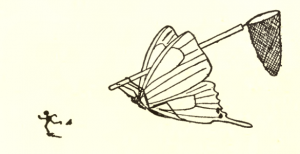
Title: Change Their Choice! Changing Behavior Using the CAN Approach and Activism Research
What Caught Our Attention: Food researcher Brian Wansink has had a rough time lately. After researchers began scrutinizing his work, he has racked up five retractions and multiple corrections. (We’re counting one retracted paper twice, as Wansink first retracted and replaced it with a new version, then retracted the replacement.)
These notices haven’t gone unnoticed, either by us or other media outlets — BuzzFeed reported on his most recent retraction this weekend, a paper a critic discussed with us, as well. Yesterday, BuzzFeed also reported that Cornell is investigating. (It wouldn’t be the first time — in April, Cornell announced that it had found evidence of mistakes, not misconduct, in Wansink’s papers.) Below, we present his 13th correction, for duplicated text — 1,376 words of duplicated text, to be exact.
Journal: Psychology & Marketing
Author: Brian Wansink
Affiliation: Cornell University, Ithaca, New York, USA
The Notice: (bolding is theirs)
It has come to the attention of the editorial staff of Psychology & Marketing (P&M) that an article authored by Brian Wansink (2015) entitled “Change their Choice! Changing Behavior Using the CAN Approach and Activism Research” failed to contain sufficient citations to the author’s previously published work. A listing of the material that was not properly cited follows below. The P&M staff acknowledges the cooperation and assistance of Professor Wansink in working to remedy these omissions.
1. The following text was quoted verbatim in Wansink (2015) from Wansink (2013). Although Wansink (2013) was listed in the Wansink (2015) reference section, this text was not cited as being from Wansink (2013):
p. 487 “Even though … apple rather than the cookie” (90 words)
p. 487 “In 2009 … (Wansink, 2013)” (220 words).
2. The following text was quoted verbatim in Wansink (2015) from Wansink (2011). Although Wansink (2011) was listed in the Wansink (2015) reference section, this text was not cited as being from Wansink (2011):
p. 493 “there are four components … detail below” (60 words)
p. 493. “Because the constructs … activism research (25 words)
p. 493. “For instance, … consumers to overeat.” (45 words)
p. 493. “Different research … proof-of-concept” (130 words)
p. 493. “To make this more clear … following way:” (65 words)
p. 494. Figure 4 (120 words)
p. 495. “A third approach … and eventually answered” (95 words)
p. 496. “Contextually rich data … eventually.” (100 words)
p. 496. “Although ‘Too many cooks … findings.” (60 words)
p. 496. “Much of academic life … not obvious” (55 words)
p. 496. “… you on a project … . fruitful project.” (110 words)
p. 496. “This personal contact … decision makers.” (45 words)
p. 496. “Partnerships can take … students purchased (75 words)
p. 496. “While the relevant … right data.” (60 words)
3. The concluding three paragraphs of Wansink’s (2015) article contained two sentences from Wansink’s (2006) book, Mindless Eating (see below). Although Wansink (2006) was listed in the Wansink (2015) reference section, the text quoted from it was not properly cited in Wansink’s (2015) article.
p. 497. “The nineteenth century has been called the Century of Hygiene.” (10 words)
p. 497. “The twenty-first century will be the Century of Behavior Change.” (11 words)
Date of Article: April 2015
Times Cited, according to Clarivate Analytics’ Web of Science: 17
Date of Notice: September 12, 2017
Like Retraction Watch? Consider making a tax-deductible contribution to support our growth. You can also follow us on Twitter, like us on Facebook, add us to your RSS reader, sign up on our homepage for an email every time there’s a new post, or subscribe to our daily digest. Click here to review our Comments Policy. For a sneak peek at what we’re working on, click here. If you have comments or feedback, you can reach us at [email protected].
Readers who are interested in more detail about this case of duplication can find it in my blog post of March 2, 2017, where — as far as I know — I was the original person to point it out: http://steamtraen.blogspot.fr/2017/03/some-instances-of-apparent-duplicate.html (Section B).
This made the student newspaper…
http://cornellsun.com/2017/11/28/cornell-food-researcher-retracts-fourth-study-due-to-no-empirical-support/
Mindless writing.
“1,376 words of duplicated text, to be exact”
Just out of curiosity does anyone know what % of the text this represents (30%? 50%?)?
Thanks
In the blog post that I linked to, I estimated the duplicated text represents about 50% of the article.
Excellent reporting by Buzzflash and RW! More of this please.
Investigative science journalism is the last bastion for countering institutional/investigator stonewalling regarding malignant scientific data/papers that must be excised from the scientific literature.
Let’s hope the faculty review panel at Cornell is untethered and allowed freedom to investigate all the suspect data.